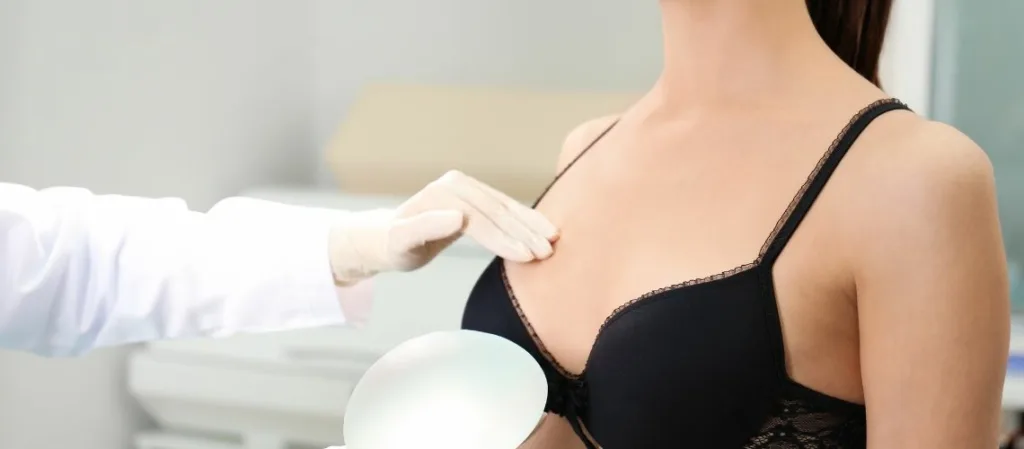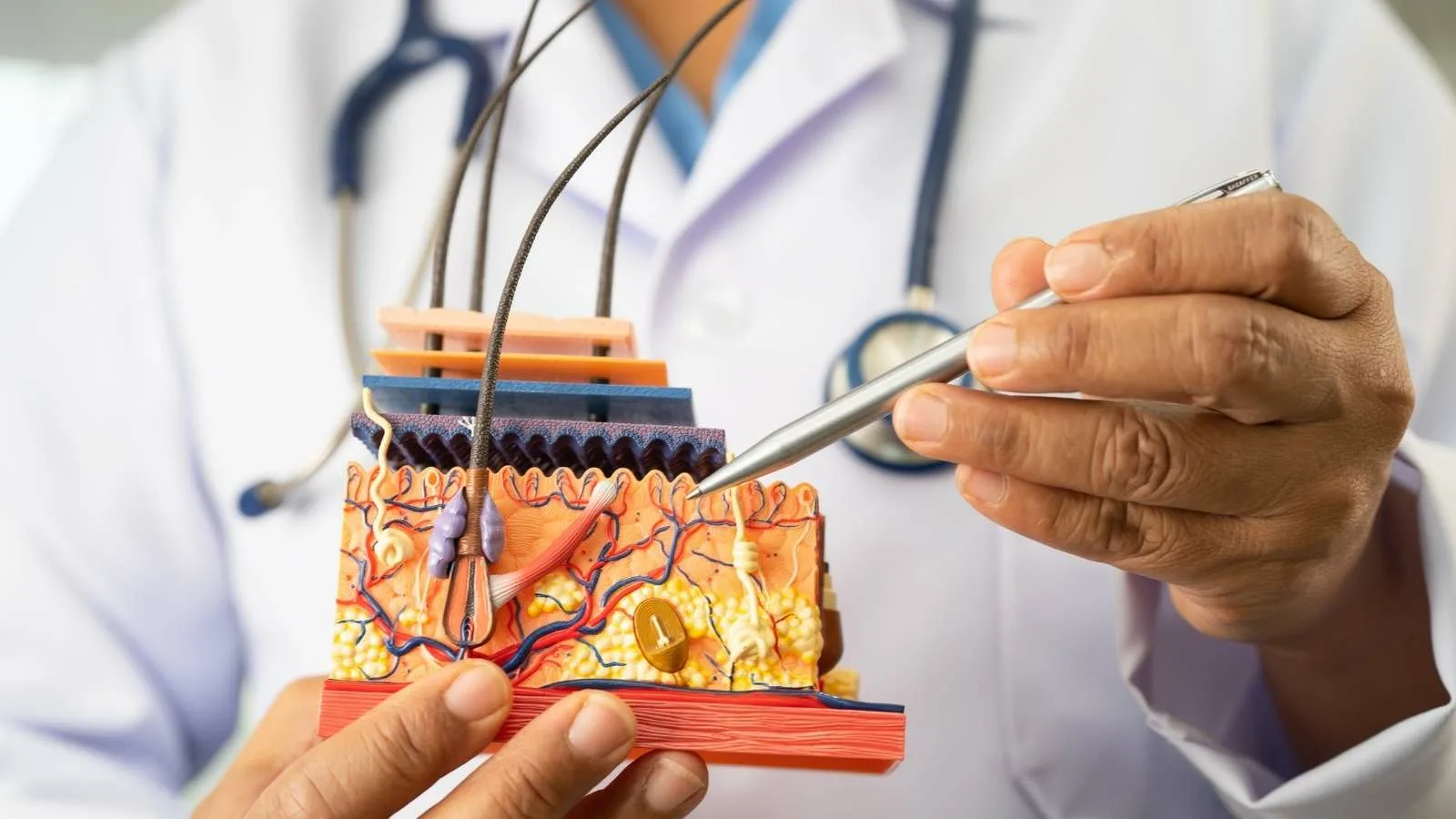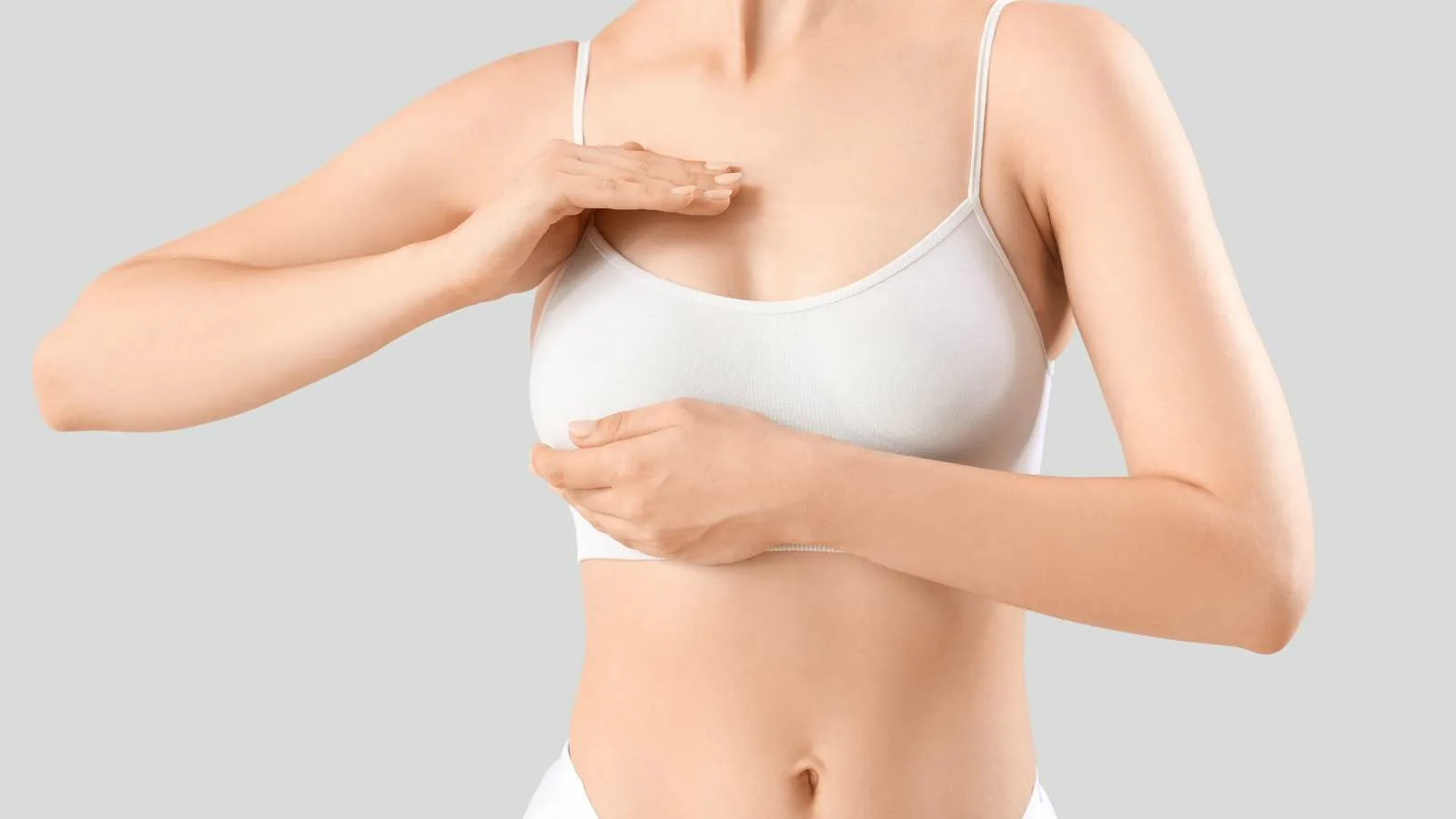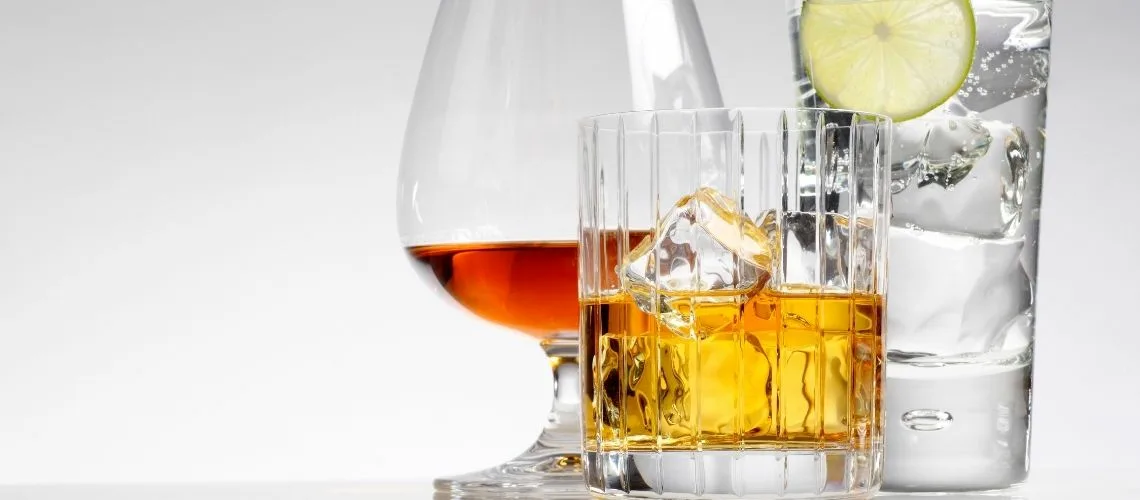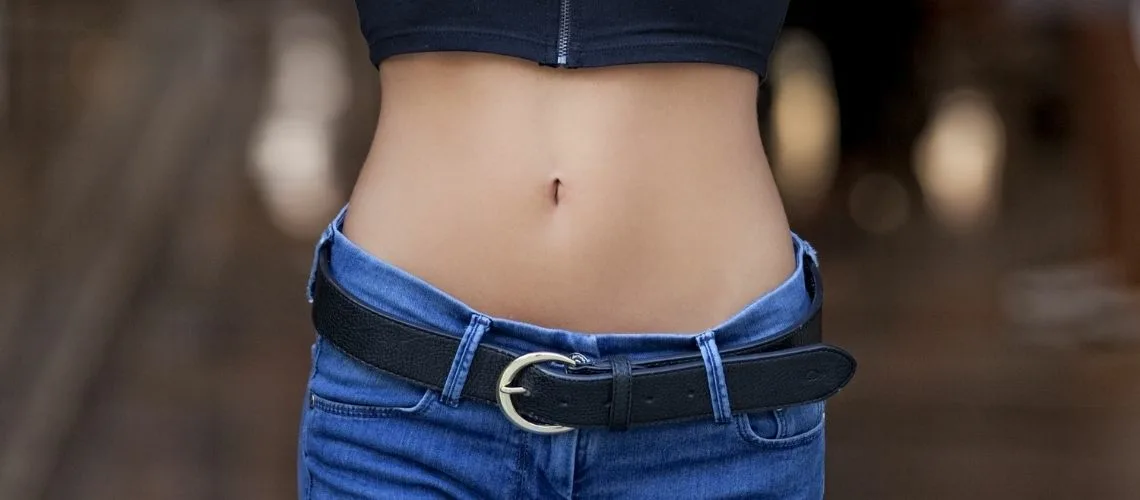Sagging can occur again after breast aesthetics due to natural aging, gravity, and lifestyle factors. While surgery provides long-lasting results, no procedure can completely prevent future changes.
Factors affecting recurrent breast sagging include skin elasticity, weight fluctuations, pregnancies, and hormonal changes. Patients with strong tissue support maintain results for longer periods.
Preventive measures after breast aesthetics involve wearing supportive bras, maintaining a stable weight, and avoiding rapid fluctuations. Regular follow-up visits ensure early detection of changes.
Corrective options for recurrent breast sagging include revision mastopexy or implant replacement. These procedures restore contour and maintain aesthetic balance when secondary drooping develops.
How Does Aging Affect Post-Surgical Breast Sagging?
Aging plays a fundamental role in the recurrence of sagging breasts after surgical intervention. Changes in the skin structure and inner tissues over time can reduce the effectiveness of aesthetic procedures. Maintaining the form and lift of the breasts becomes increasingly difficult with the aging process:
- Decreased skin elasticity
- Weakening of collagen and elastin fibers
- Reduction of fat tissue and glands within the breasts
- Gradual loss of strength in Cooper’s ligaments
The loss of skin firmness and weakening of supportive structures reduce the breasts’ resistance to gravity. As the breasts lose volume, the load on the skin and connective tissue increases, accelerating the sagging process.
After surgery, it is important for patients to take care of their skin and to support the muscles around the breast area through regular exercise to minimize the effects of aging. Additionally, avoiding weight fluctuations and using appropriate undergarments can help maintain the shape of the breasts.
To preserve the desired appearance for a long time after breast aesthetics, regular follow-up examinations should be conducted, and non-surgical supportive methods should be considered when necessary. The aging process cannot be completely halted, but its effects can be minimized with proper precautions.
Do Weight Fluctuations Affect the Longevity of Breast Aesthetics Results?
Weight fluctuations can have a direct impact on the longevity of breast aesthetics results. Weight gain causes the skin to stretch and increases the size of the breasts, while weight loss leads to a decrease in breast volume due to the loosening of the skin. This can negatively affect the outcomes of procedures such as breast augmentation, reduction, and lift:
- Weight gain
- Weight loss
- Pregnancy
- Breastfeeding
In breast augmentation surgeries, weight loss can cause implants to become more prominent, whereas weight gain can lead to unwanted sagging of the breasts. After a breast reduction surgery, losing weight may further decrease the breast volume, resulting in an unnatural appearance. In those who have undergone a breast lift, weight fluctuations can cause sagging to reoccur.
Maintaining a stable weight is very important for preserving the results of breast aesthetic procedures over the long term. Due to weight fluctuations, it can become harder to maintain skin elasticity, which may necessitate additional interventions in the future.
Can Pregnancy and Breastfeeding Cause Post-Surgical Breast Sagging?
Pregnancy and breastfeeding can lead to significant physiological changes that may cause breasts to sag again after aesthetic surgery. During this period, the rise in hormone levels causes the breast tissue to enlarge and the skin to stretch. When breastfeeding ends, the breast volume may decrease, resulting in loss of elasticity and triggering sagging:
- Hormonal changes
- Increase and subsequent decrease in breast volume
- Stretching of the skin and connective tissues leading to loss of elasticity
- An increased number of pregnancies
These physiological effects can negatively influence the longevity of the surgical outcomes in individuals who have undergone aesthetic procedures. Once the breast tissue is stretched, it may not fully return to its former shape. Additionally, the risk of breast sagging increases with the number of pregnancies.
It is important for individuals to take into account their future pregnancy plans before undergoing aesthetic intervention to maintain surgical results for a longer period. It is especially recommended that those who plan to have children discuss this in detail with their surgeons.
What Role Does Skin Elasticity Play in Preserving Breast Aesthetics Results?
Skin elasticity is critical in preserving the long-term results of breast aesthetics. Elastic skin helps maintain the shape achieved during surgery and prolongs the effectiveness of the procedure. Decreased elasticity, however, can lead to issues such as sagging over time and negatively affect aesthetic outcomes.
Factors affecting skin elasticity:
- Age
- Genetic structure
- Hormonal changes
- Environmental factors
These factors determine the structural resilience of the skin and its ability to adapt to surgical interventions.
Evaluating skin elasticity before surgery ensures the correct operation planning. Simple methods like a “skin pinch test” as well as advanced techniques can be used for this purpose. In cases where elasticity is low, surgeons aim to enhance outcomes by using supportive methods. For example, supportive sutures can increase skin support.
Skin elasticity is not solely limited to genetic or environmental factors; a person’s lifestyle also affects this condition. Smoking, poor nutrition, and insufficient hydration can adversely affect skin quality. Adopting a healthy lifestyle supports skin elasticity and helps aesthetic interventions yield more permanent results.
How Do Surgical Techniques Influence the Risk of Future Breast Sagging?
The surgical techniques used in breast aesthetics can directly influence the risk of future sagging. Factors such as implant placement method, supportive materials, and lifting techniques play a critical role in reducing this risk:
- Submuscular placement: The implant is placed under the muscle, reducing the risk of sagging.
- Subglandular placement: The implant is placed beneath the breast tissue, providing a natural look but increasing the possibility of sagging.
- Highly cohesive silicone gel implants: They are durable and reduce the risk of sagging.
- Supportive meshes or internal bra applications: They support the breast tissue and help maintain shape.
- Mastopexy techniques: Lollipop or anchor incisions are applied according to the degree of sagging.
The correct selection of surgical technique affects not only the aesthetic results but also long-term satisfaction after surgery. Each patient’s anatomical features, skin elasticity, lifestyle, and post-operative care process are among the factors that determine the risk of sagging. Especially smoking, weight changes, and genetic predisposition can negatively affect the outcomes.
Therefore, the patient’s careful behavior during the post-surgical period is as important as the surgeon’s expertise. For example, using an appropriate support bra positively influences the healing process and can delay sagging. Surgeon-patient collaboration is of great importance for long-term satisfaction.
What Measures Can Be Taken to Minimize Breast Sagging After Aesthetic Procedures?
In breast aesthetic procedures, surgical techniques, post-operative care, and lifestyle changes are crucial for preventing breast sagging. These measures can increase the permanence of aesthetic results and lead to more satisfactory outcomes in the long run:
- Use of biological support meshes for internal tissue support
- Placing implants of the correct size and under the muscle
- Choosing appropriate surgical techniques
Points to consider in the post-operative period:
- Regular use of supportive bras
- Full compliance with the doctor’s recovery instructions
- Avoiding heavy lifting and strenuous movements
Lifestyle changes:
- Maintaining a stable weight
- Not smoking
- Engaging in regular, moderate exercise
These measures must be carefully followed to preserve long-term results. Taking good care of one’s breasts after surgery, supporting tissue health, and protecting against external factors are essential. In particular, opting for these procedures after completing pregnancy and breastfeeding can prevent hormonal changes and milk production from affecting the aesthetic results.
References
- Spear, S. L., & Davison, S. P. (2003). Breast augmentation and mastopexy: Can they be performed simultaneously? Plastic and Reconstructive Surgery, 112(1), 189-203.
- Rohrich, R. J., & Gosman, A. A. (2006). Recurrent breast ptosis: Prevention and management. Plastic and Reconstructive Surgery, 118(7S), 135S-145S.
- Hammond, D. C., et al. (2007). Aesthetic breast surgery: A review of current techniques. Plastic and Reconstructive Surgery, 120(1), 1-17.
- Hidalgo, D. A., & Spector, J. A. (2010). Mastopexy. Plastic and Reconstructive Surgery, 125(5), 1785-1795.

Op. Dr. Erman Ak is an internationally experienced specialist known for facial, breast, and body contouring surgeries in the field of aesthetic surgery. With his natural result–oriented surgical philosophy, modern techniques, and artistic vision, he is among the leading names in aesthetic surgery in Türkiye. A graduate of Hacettepe University Faculty of Medicine, Dr. Ak completed his residency at the Istanbul University Çapa Faculty of Medicine, Department of Plastic, Reconstructive and Aesthetic Surgery.
During his training, he received advanced microsurgery education from Prof. Dr. Fu Chan Wei at the Taiwan Chang Gung Memorial Hospital and was awarded the European Aesthetic Plastic Surgery Qualification by the European Board of Plastic Surgery (EBOPRAS). He also conducted advanced studies on facial and breast aesthetics as an ISAPS fellow at the Villa Bella Clinic (Italy) with Prof. Dr. Giovanni and Chiara Botti.
Op. Dr. Erman Ak approaches aesthetic surgery as a personalized art, tailoring each patient’s treatment according to facial proportions, skin structure, and natural aesthetic harmony. His expertise includes deep-plane face and neck lift, lip lift, buccal fat removal (bichectomy), breast augmentation and lifting, abdominoplasty, liposuction, BBL, and mommy makeover. He currently provides safe, natural, and holistic aesthetic treatments using modern techniques in his private clinic in Istanbul.

